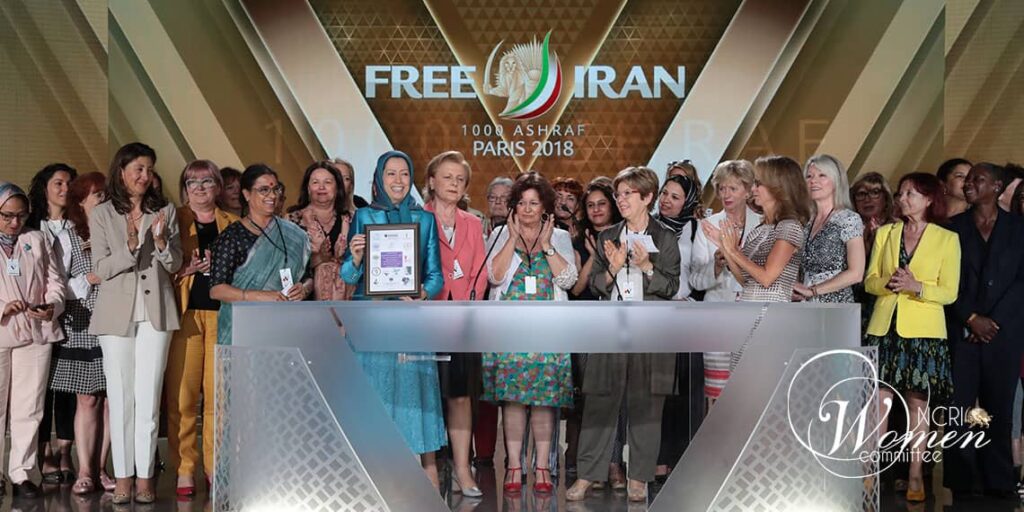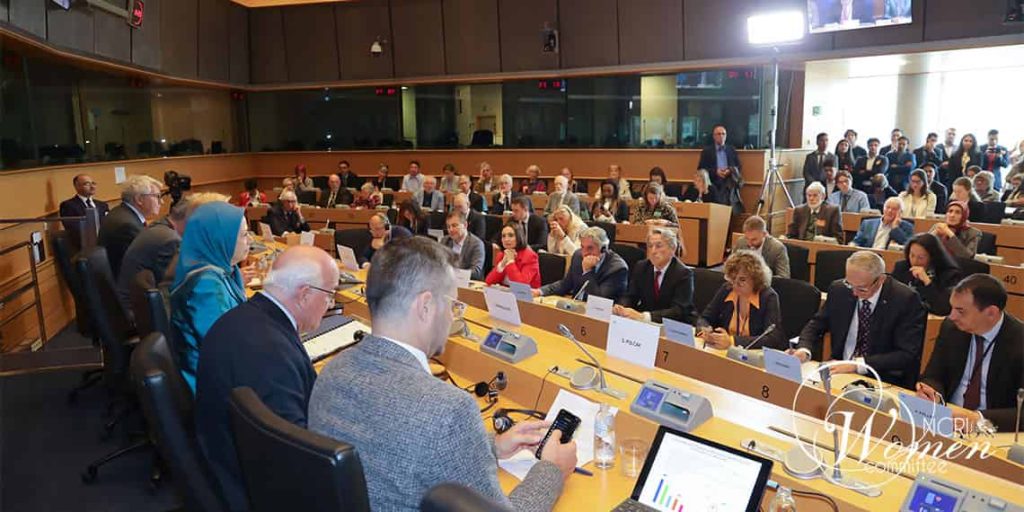
On October 22, we commemorate the pivotal moment when Maryam Rajavi was elected as the President-elect of the National Council of Resistance of Iran (NCRI) for the transitional period following the anticipated overthrow of Iran’s clerical regime.
This milestone marks a significant shift in the Iranian Resistance’s approach, championing a strategic, cultural, political, and ideological fight against the misogynous ruling mullahs.
Rajavi’s election symbolizes the antithesis of the mullahs’ governance, embodying the vision for a future free Iran. This leadership transition was not an isolated event but a part of a broader movement towards gender equality within the Iranian Resistance.
The significant shift began on October 18, 1989, when Massoud Rajavi, the then Secretary-General of the People’s Mojahedin of Iran (PMOI/MEK), passed his mandate to Maryam Rajavi. Having co-led the PMOI since 1985, Maryam was deemed “uniquely qualified” to head the main opposition, a movement with a history marked by 120,000 martyrs and a 20-year struggle against dictatorships.

Under her leadership, the MEK underwent a major transformation, opening up equal opportunities for women in areas previously dominated by men.
This paradigm shift required a significant change in attitudes towards women, a change that was gradually realized within the organization as women demonstrated their capabilities in various fields.
The inclusion of women in leadership roles within the MEK was facilitated by the cooperation of progressive men within the organization. This balanced approach led to innovative methods and practices in the struggle against the mullahs’ regime.
On August 28, 1993, the NCRI, a coalition of Iranian opposition groups, elected Maryam Rajavi as its President-elect, a decision publicized on October 22, 1993. The NCRI, acting as a parliament-in-exile, represents a united front against the Iranian regime.

As Maryam Rajavi has challenged the fundamentalist regime in Iran through political, social, cultural, and ideological avenues. Her focus on reinterpreting Islam as a religion of tolerance and democracy stands in stark contrast to the mullahs’ extremist interpretation.
Her publications, including “Tolerant Islam vs. Extremism,” “Women, the Force for Change,” and “Women against Fundamentalism,” reflect her commitment to these ideals.
Following her election, Rajavi delegated her PMOI responsibilities to an all-women Leadership Council, further cementing her commitment to gender equality. In her speeches, including those at the Oslo City Hall in 1994 and in London in 1996, Rajavi has consistently linked women’s equality to the broader struggle against reactionary ideology and fundamentalism.
In 2004, during a speech at the European Parliament, she introduced the ‘Third Option,’ advocating for change driven by the Iranian people and Resistance, rejecting both war and appeasement.
Maryam Rajavi’s leadership has been instrumental in various campaigns, including the removal of the MEK from terrorist lists in Europe and the U.S., and the international campaign to protect MEK members in Ashraf and Liberty.
I’ve come here with a clear message that there is only one path to stop this disaster and that is standing against the primary cause of this conflict, which is the warmongering dictatorship ruling #Iran.https://t.co/qDw32EAQ4l pic.twitter.com/0uLJY2oK7P
— Maryam Rajavi (@Maryam_Rajavi) November 27, 2023
Furthermore, her call for justice for the victims of the 1988 massacre in Iran has been a vital part of her advocacy. This movement demanded accountability for the perpetrators and recognition of the victims.
The increasing role of women in the Iranian protest movements from 2009 to 2022 highlights the impact of Rajavi’s vision. The Iranian regime itself has acknowledged the organized nature of these protests and the prominent role of women, often led by the MEK.

MEK Iran (follow us on Twitter and Facebook), Maryam Rajavi’s on her site, Twitter & Facebook, NCRI (Twitter & Facebook), and People’s Mojahedin Organization of Iran – MEK IRAN – YouTu
